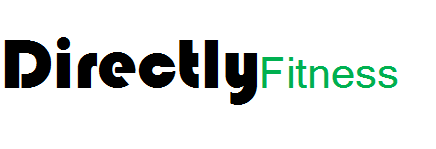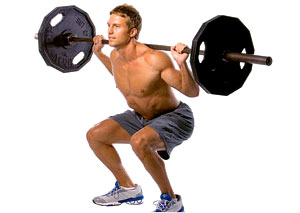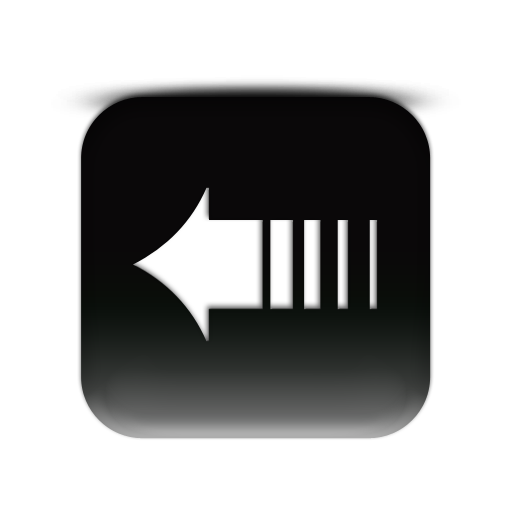.
Exercise Techniques
Like the site? Sign up for the FREE newsletter. I'll send a new article once or twice a month. Unsubscribe
anytime.
anytime.

About this Site l Contact l Free Newsletter l Subscribe to Rss Feed
Recommended Products l Fitness Store l Directly Fitness Blog
Recommended Products l Fitness Store l Directly Fitness Blog

How to Perform the Olympic Squat:


Proper Exercise Technique:
BARBELL SQUATS
Find this site useful? Click the donate button. Its greatly appreciated.
Think a friend might benefit from this page? Share it!
Think a friend might benefit from this page? Share it!
Note:
This is a complex exercise to perform correctly. Try practicing this motion with just your own body weight before proceeding to use dumbbells or a barbell. I will explain using a barbell as this is the most common form. If using your own body weight simply cross your arms across your chest. The rest of the exercise is the same movement as will added weight.
There are three main types of squat you may not know about:
1. Olympic Squat
2. Front Squat
3. Overhead Squat
The Olympic squat is probably what you think of when you hear the word "squat" and is the traditional method that will be explained here. The Olympic squat has two variations to it: "high bar" and "low bar". High bar has the bar placed right on top of the traps behind your neck while low bar is a few inches lower on traps. Usually people may lift more with low bar technique although some people will find the high bar more comfortable. Choose which feels for comfortable to you.
Utilizing squats can greatly benefit anyone in the areas of strength, endurance, muscle size, and flexibility. That's right squats take a great deal of flexibility so if you feel you don't have flexibility, practice without any weight first and work on exercises to target those tight hip muscles as well as a stretching program. It will all be worth it once you can squat and start seeing serious results.
• Be sure that the top of your head is about ½ to ¾ feet taller than
the height of the racked barbell.
• Back up so back of neck is touching barbell and bar is resting on
shoulders.
• Press feet into ground through heels to lift bar slightly off the rack
(extending legs).
• Back up so there is enough clearance in front and below you (some
racks have “safety” bars about 3 feet off the ground should you fall
with the weight).
• Feet should be slight wider than shoulder width apart and toes
slightly pointed out from neutral.
• This is the squat starting position.
• Try to concentrate using force from your heels rather than your toes.
• Exhale during this phase of the exercise.
• Be sure not to lean too far forward or backward.
• Your natural tendency will be to lean forward but keep your chest
out and straight posture.
• Keep knees in line and don’t let them flare in or out excessively.
• It will take practice to keep a good posture during this exercise.
• Once you are back in the starting position you can either repeat or
rack the bar by stepping forward and placing bar appropriately.
• Be sure to slowly dip away from bar just in case the bar isn’t racked
properly.
to maintain upright posture by looking up).
• Be sure to keep this upright posture and abdominals tight!
• Don’t lean forward at any point in the movement. This can lead to
injury!
• Stick butt out and slowly lower yourself concentrating on shifting
most of your weight through your heels, not your toes.
• Lower slowly until your knees are flexed to about 90 degrees.
• Squats can also be done with “partial reps” if you don’t feel.
comfortable going down that far.
• Be sure to inhale on your way down.
must be learned before attempting this exercise! Try looking at yourself in
the mirror while practicing with no added weight.
• This is a high intensity exercise as almost every major muscle is being
worked! Be sure to have lots of energy and focus when performing the
deadlift.
• Be sure to inhale on the way down and exhale on the way up! If you hold
your breath in you risk passing out in the middle of the movement due to
built up pressure in your body!
• This exercise will feel very unnatural to some and most fail at forearm
strength.
• If you don’t have good forearm strength it won’t matter how strong your legs
and back are. Strength your forearms if you feel they can’t hold the bar
efficiently.
• Use lifting chalk if you feel your grip could use a little boost. You can find it at the Fitness
Store for great deals.
• If you progress to heavier sets, I recommend you use a belt to prevent injury
as it provides extra stability and support. I recommend you only use it for
those heavy sets as overusing a belt can actually lead to core weakness.
Simply do without the belt for lighter sets leading up to the heavy sets at which time you can put the belt on. This will keep you safe without having the core weakness associated with using a belt.
The best belts are the thick powerlifting style belts that are just as wide in the front as they are in the back. This allows you to push your stomach against the belt and provide more support for the lower back. I suggest you avoid the thin weight lifting belts that are pretty common in department stores. If you are interested in weight lifting belts you can find them in the Fitness Store.
This is a complex exercise to perform correctly. Try practicing this motion with just your own body weight before proceeding to use dumbbells or a barbell. I will explain using a barbell as this is the most common form. If using your own body weight simply cross your arms across your chest. The rest of the exercise is the same movement as will added weight.
About the Barbell Squats:
The barbell squat is complex movement that will take time to master, but once it can be performed correctly it can be a great muscle building exercise.There are three main types of squat you may not know about:
1. Olympic Squat
2. Front Squat
3. Overhead Squat
The Olympic squat is probably what you think of when you hear the word "squat" and is the traditional method that will be explained here. The Olympic squat has two variations to it: "high bar" and "low bar". High bar has the bar placed right on top of the traps behind your neck while low bar is a few inches lower on traps. Usually people may lift more with low bar technique although some people will find the high bar more comfortable. Choose which feels for comfortable to you.
Utilizing squats can greatly benefit anyone in the areas of strength, endurance, muscle size, and flexibility. That's right squats take a great deal of flexibility so if you feel you don't have flexibility, practice without any weight first and work on exercises to target those tight hip muscles as well as a stretching program. It will all be worth it once you can squat and start seeing serious results.
Muscles Used in the Squats Exercise:
Many of the muscles around the hips, thigh, and buttocks region are active during the squat. Some of the primary muscles are: Gluteus maximus, hamstrings, quadriceps, adductor magnus, abdominals, erector spinae, soleus, and gastrocnemius.Starting Position:
• Begin by standing in front of a racked barbell.• Be sure that the top of your head is about ½ to ¾ feet taller than
the height of the racked barbell.
• Back up so back of neck is touching barbell and bar is resting on
shoulders.
• Press feet into ground through heels to lift bar slightly off the rack
(extending legs).
• Back up so there is enough clearance in front and below you (some
racks have “safety” bars about 3 feet off the ground should you fall
with the weight).
• Feet should be slight wider than shoulder width apart and toes
slightly pointed out from neutral.
• This is the squat starting position.
Upward Phase:
• Drive your feet into the ground while contracting your buttocks.• Try to concentrate using force from your heels rather than your toes.
• Exhale during this phase of the exercise.
• Be sure not to lean too far forward or backward.
• Your natural tendency will be to lean forward but keep your chest
out and straight posture.
• Keep knees in line and don’t let them flare in or out excessively.
• It will take practice to keep a good posture during this exercise.
• Once you are back in the starting position you can either repeat or
rack the bar by stepping forward and placing bar appropriately.
• Be sure to slowly dip away from bar just in case the bar isn’t racked
properly.
Downward Phase:
• Keep your head straight or look up if you prefer (many find it easierto maintain upright posture by looking up).
• Be sure to keep this upright posture and abdominals tight!
• Don’t lean forward at any point in the movement. This can lead to
injury!
• Stick butt out and slowly lower yourself concentrating on shifting
most of your weight through your heels, not your toes.
• Lower slowly until your knees are flexed to about 90 degrees.
• Squats can also be done with “partial reps” if you don’t feel.
comfortable going down that far.
• Be sure to inhale on your way down.
Squat Tips:
• This movement is very unnatural to most and will not come easily. Formmust be learned before attempting this exercise! Try looking at yourself in
the mirror while practicing with no added weight.
• This is a high intensity exercise as almost every major muscle is being
worked! Be sure to have lots of energy and focus when performing the
deadlift.
• Be sure to inhale on the way down and exhale on the way up! If you hold
your breath in you risk passing out in the middle of the movement due to
built up pressure in your body!
• This exercise will feel very unnatural to some and most fail at forearm
strength.
• If you don’t have good forearm strength it won’t matter how strong your legs
and back are. Strength your forearms if you feel they can’t hold the bar
efficiently.
• Use lifting chalk if you feel your grip could use a little boost. You can find it at the Fitness
Store for great deals.
• If you progress to heavier sets, I recommend you use a belt to prevent injury
as it provides extra stability and support. I recommend you only use it for
those heavy sets as overusing a belt can actually lead to core weakness.
Simply do without the belt for lighter sets leading up to the heavy sets at which time you can put the belt on. This will keep you safe without having the core weakness associated with using a belt.
The best belts are the thick powerlifting style belts that are just as wide in the front as they are in the back. This allows you to push your stomach against the belt and provide more support for the lower back. I suggest you avoid the thin weight lifting belts that are pretty common in department stores. If you are interested in weight lifting belts you can find them in the Fitness Store.
Here is a video to assist you in learning the proper form for Squats:
Continue to learn more about how to exercise: Proper Exercise Techniques
THE SQUAT
